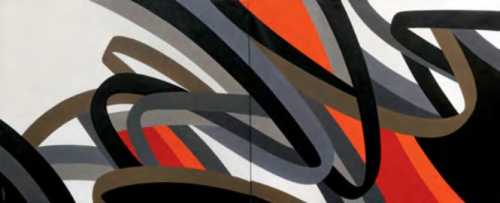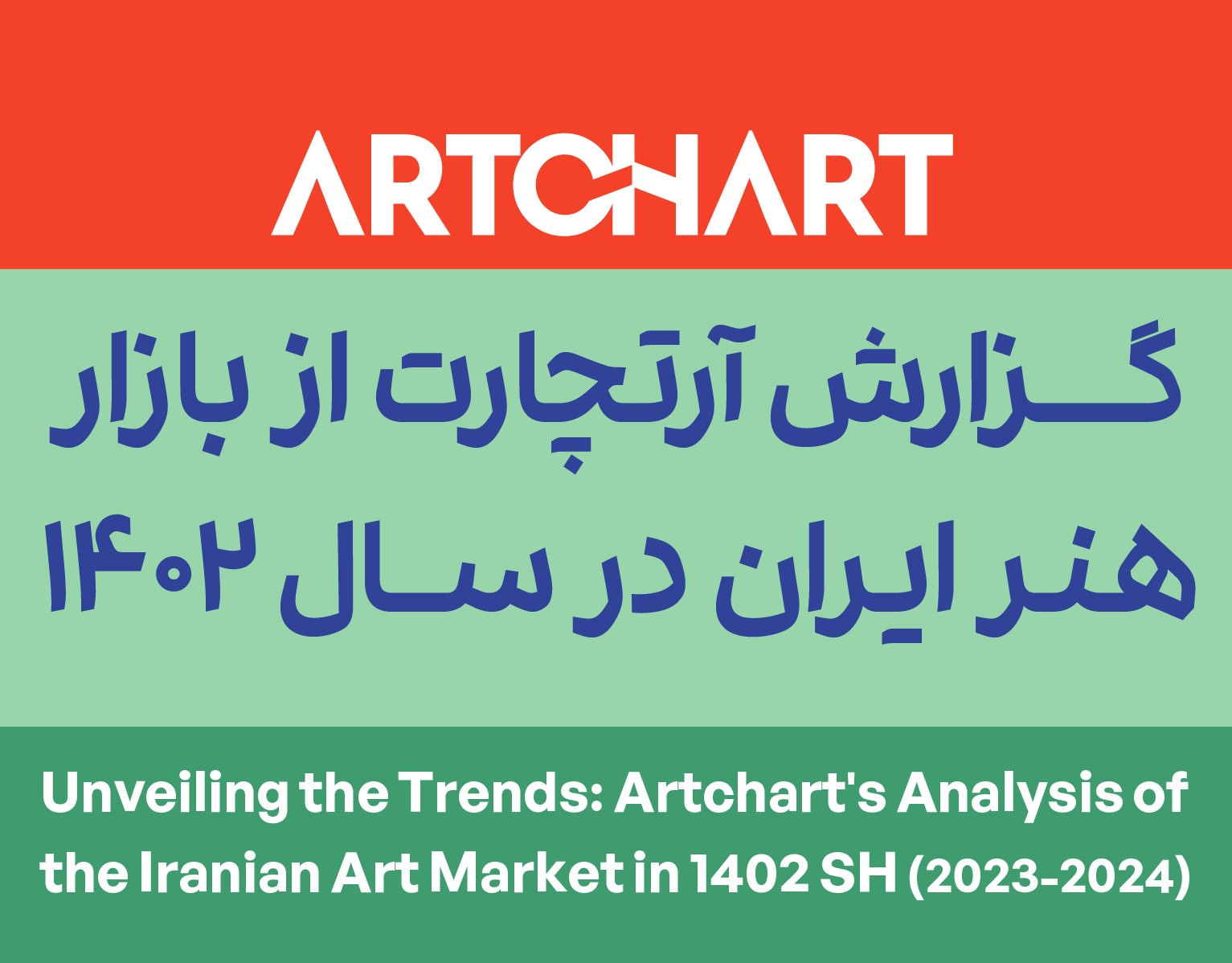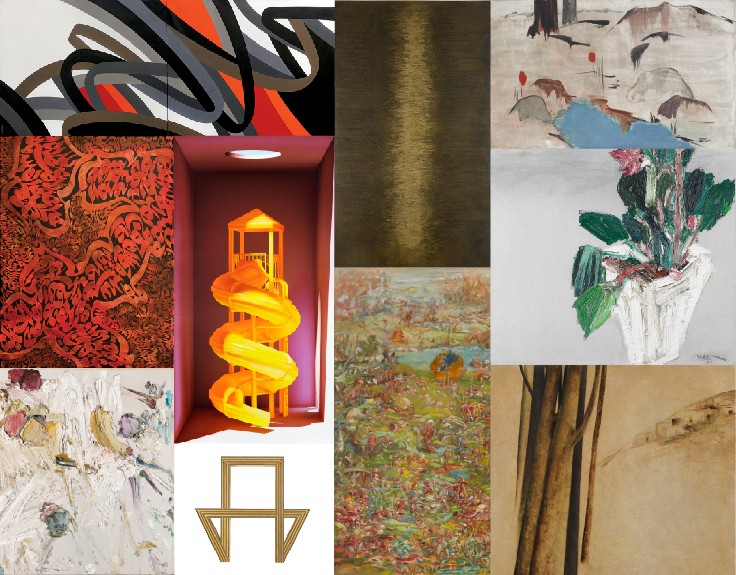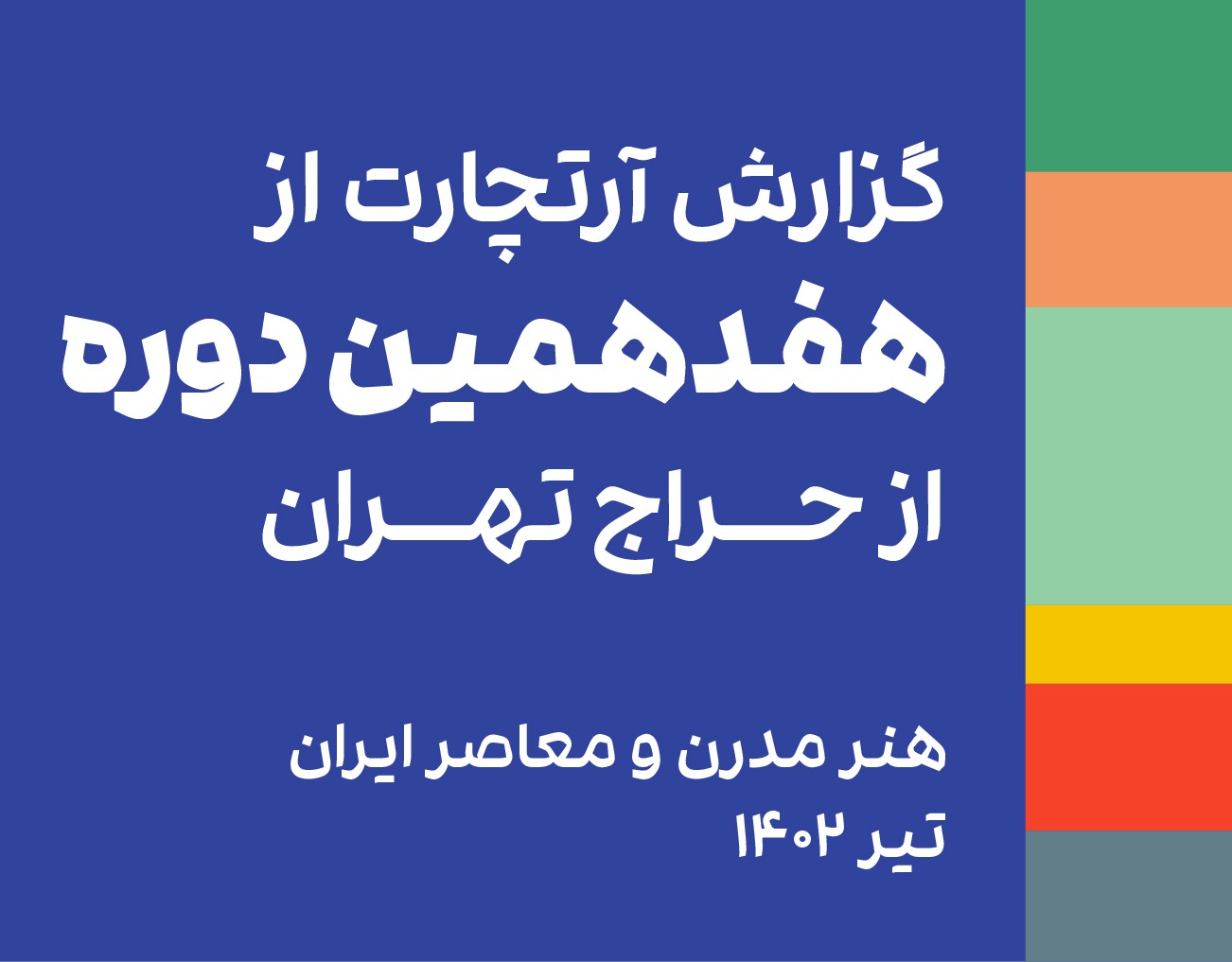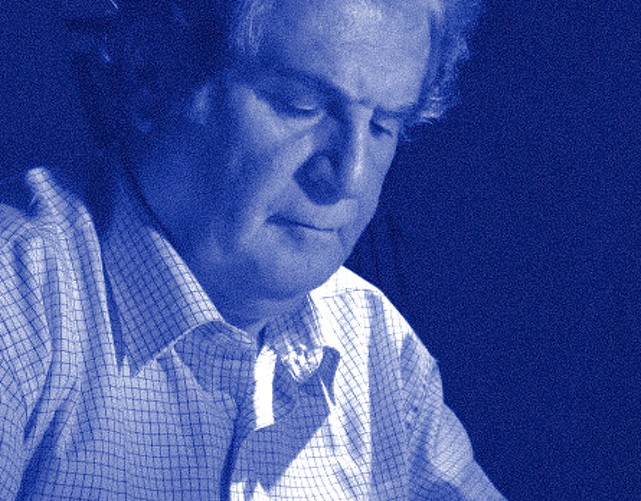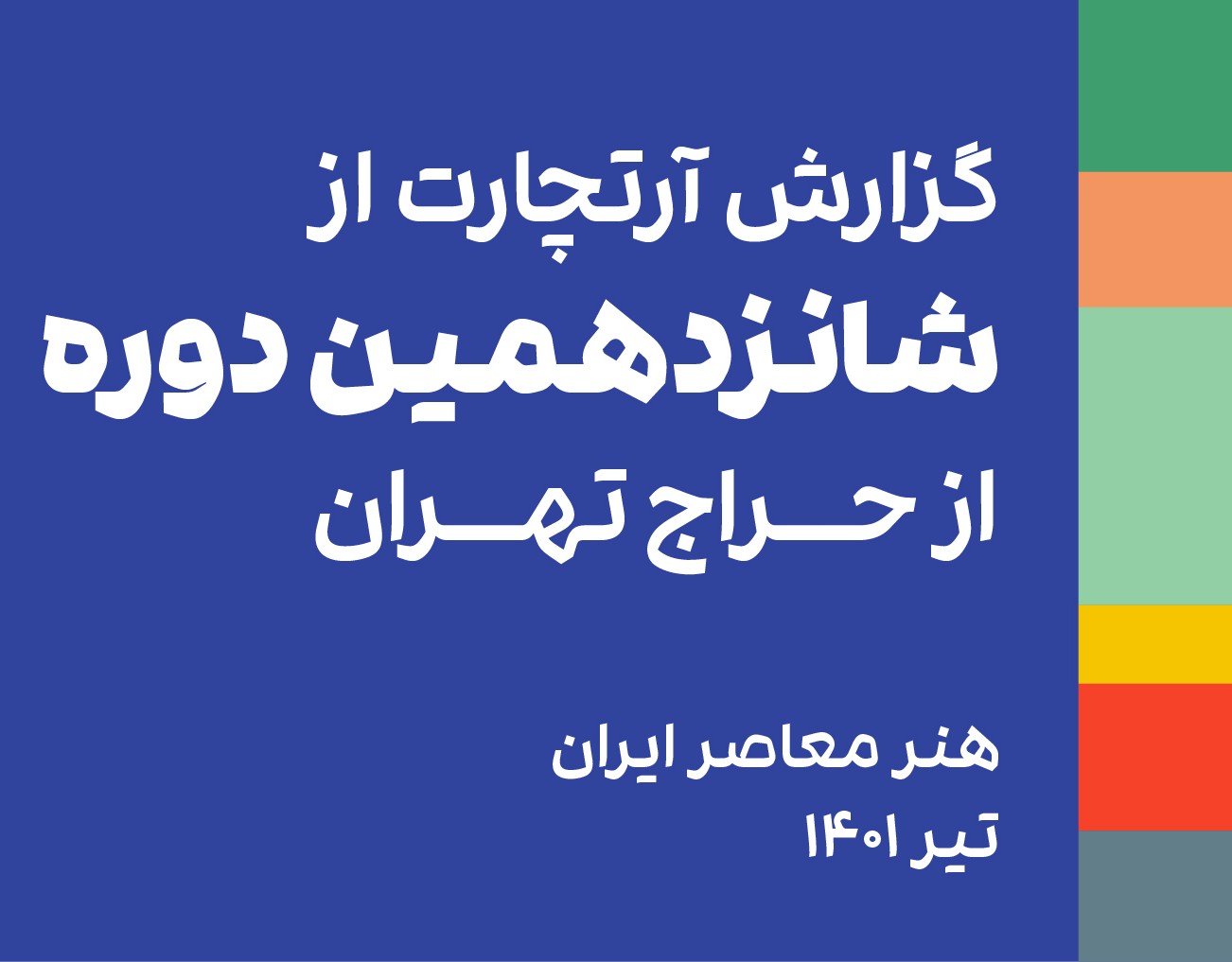About Koorosh Shishegaran
Koorosh Shishegaran is a contemporary Iranian painter, graphic designer and printer. Shishegaran is known for his abstract calligraphic paintings. However, this empiricist artist has tried different mediums during his career. He graduated with a degree in painting from Tehran Conservatory of Fine Arts and studied interior architecture at the Faculty of Decorative Arts.
Shishegaran’s art has contained social and populist aspects from the very first day. He showed this tendency in the way he presented his works in his first professional exhibition, which he held in 1972 in Tehran Mess Gallery. Instead of selling, he donated all of his 42 works to ordinary people and public institutions: "We should take the painting to the people, not to wait for them to come to it." Along with this idea, in 1976, he sent the postcards of his paintings to certain people. His first foreign exhibition was held in Switzerland that year. In this collection, Shishegaran had reconstructed the works of prominent Iranian and world artists such as Mondrian, Modigliani, Picasso, Klee, Vaziri and Alireza Abbasi, using his own technique and method of expression. This experience was a test for Shishegaran to see how "the work of several different painters - with different techniques, styles, philosophies and nationalities" could be brought under one style and one vision. "He took them from one time to another time and reproduced them in different compositions and performances, and somehow made them serve each other."
A year later, in a radical experience, he presented Shahreza Street (the current Enghelab) as a living work of art. Sheshegaran pasted posters across Revolution Street on which he wrote to the passers-by: "Shahreza Street is a painting; Shahreza Street is a statue; "Shahreza Street is architecture, it is graphics, it is cinema, it is theater, it is poetry, it is writing, it is music, it is dance, it is caricature, it is photography."
In another radical experiment, Shishegaran, in collaboration with his brothers, made copies and distributed posters with current political and social themes – first on the Arab-Lebanese war and later on in connection with the Revolution of 1978 – throughout the city. Shishegaran continued his search by combining the potentials of photography, painting, and graphics to create a collection called "Photoworkers", which were works that fluctuated on the border between these three mediums and still followed the political and social concerns of the artist.
In his famous abstract paintings, Shishegaran is more committed to painting than to politics and society. Shishegaran's approach towards the coil of lines is reminiscent of the graphic "strokes" on Liechtenstein. These lines are more of a graphic interpretation of this painting element than a painting. In some of the paintings, the confusing coils resulting from the flow of these lines in space evoke the shadow of a corpse or human body, and change from pure abstraction to formation. Pakbaz writes about these works: "Dynamic combinations with curved lines and intertwined ribbons and vivid colors. Although the paintings are deliberately executed, they have a sense of spontaneity. "The graphic nature of the paintings highlights their connection to his posters."
Shishegaran’s art has contained social and populist aspects from the very first day. He showed this tendency in the way he presented his works in his first professional exhibition, which he held in 1972 in Tehran Mess Gallery. Instead of selling, he donated all of his 42 works to ordinary people and public institutions: "We should take the painting to the people, not to wait for them to come to it." Along with this idea, in 1976, he sent the postcards of his paintings to certain people. His first foreign exhibition was held in Switzerland that year. In this collection, Shishegaran had reconstructed the works of prominent Iranian and world artists such as Mondrian, Modigliani, Picasso, Klee, Vaziri and Alireza Abbasi, using his own technique and method of expression. This experience was a test for Shishegaran to see how "the work of several different painters - with different techniques, styles, philosophies and nationalities" could be brought under one style and one vision. "He took them from one time to another time and reproduced them in different compositions and performances, and somehow made them serve each other."
A year later, in a radical experience, he presented Shahreza Street (the current Enghelab) as a living work of art. Sheshegaran pasted posters across Revolution Street on which he wrote to the passers-by: "Shahreza Street is a painting; Shahreza Street is a statue; "Shahreza Street is architecture, it is graphics, it is cinema, it is theater, it is poetry, it is writing, it is music, it is dance, it is caricature, it is photography."
In another radical experiment, Shishegaran, in collaboration with his brothers, made copies and distributed posters with current political and social themes – first on the Arab-Lebanese war and later on in connection with the Revolution of 1978 – throughout the city. Shishegaran continued his search by combining the potentials of photography, painting, and graphics to create a collection called "Photoworkers", which were works that fluctuated on the border between these three mediums and still followed the political and social concerns of the artist.
In his famous abstract paintings, Shishegaran is more committed to painting than to politics and society. Shishegaran's approach towards the coil of lines is reminiscent of the graphic "strokes" on Liechtenstein. These lines are more of a graphic interpretation of this painting element than a painting. In some of the paintings, the confusing coils resulting from the flow of these lines in space evoke the shadow of a corpse or human body, and change from pure abstraction to formation. Pakbaz writes about these works: "Dynamic combinations with curved lines and intertwined ribbons and vivid colors. Although the paintings are deliberately executed, they have a sense of spontaneity. "The graphic nature of the paintings highlights their connection to his posters."
The Most Expensive Artwork
At Auctions
First Attendance
31 October 2007
# Attendance
61
# Artworks
75
Average Realized Price
77,899 USD
Average Min Estimate
54,006 USD
Average Max Estimate
72,512 USD
Sell-through Rate
86.301%
Average Growth of Artwork Worth
39.609%
Timeline
The 24th Tehran - Contemporary Iranian Art auction
3 October
The 23rd Tehran - Modern and Contemporary Iranian Art auction
22 May
… And Poetry Will No Longer Serve exhibition
15 November
Modern and Contemporary Middle Eastern Art auction
13 November
In Memory of Hadi Jamali 1 exhibition
1 November
Timeless Creation exhibition
25 October
Arthibition- November 2024 auction
25 October
The 21st Tehran - Contemporary Iranian Art auction
11 October
To Doubt or not to Doubt exhibition
13 September
Gargas exhibition
23 August
"Bitter, Sweet, Burden" Iranian Perspective, Three Views exhibition
9 August
The 20th Tehran- Modern and Contemporary Iranian Art auction
5 July
List 2 exhibition
28 June
A Collection exhibition
10 May
Connoisseur's Look exhibition
19 April
For Nowrouz exhibition
15 March
10s of Artworks, 10s of Millions exhibition
8 March
Gozar Project exhibition
19 January
The 18th Tehran Contemporary Art auction
12 December
Border exhibition
27 October
Snow and Stork curated by Behzad Hatam exhibition
25 August
Annual Amordad 1402 exhibition
4 August
The 17th Tehran Modern and Contemporary Iranian Art auction
18 July
Paper Works exhibition
17 February
Modern & Contemporary Art Signature auction
17 November
MIDDLE EAST MODERN & CONTEMPORARY auction
5 July
Tehran- 16th- Iranian contemporary art auction
1 July
The last event 1400 exhibition
25 February
A Selection of Modern Works from The Laal Collection exhibition
25 February
Winter selection 2022 exhibition
14 January
The 15th Tehran- Modern Iranian Art auction
14 January
Annual Amordad 1400 exhibition
10 September
now... exhibition
10 September
Summer Selection exhibition
30 July
Small Artworks collection exhibition
11 June
The Collection of Liam Gallery exhibition
20 May
Birds exhibition
5 March
Trends and Approaches 3 exhibition
26 February
Sanctuary exhibition
15 January
Photogenic exhibition
11 December
Distribution of the sensible exhibition
30 October
6th National auction
8 August
One by One exhibition
3 July
Show and Sell of Works for the Benefit of Corona Patients exhibition
24 April
+98 exhibition
21 February
Collector Circle exhibition
11 February
From Tehran with love auction
10 February
Two-Way Street exhibition
7 January
White Black Gray exhibition
13 December
Two Out of Thousands exhibition
1 November
Annual Amordad 98 exhibition
9 August
Annual Review exhibition
19 July
یازدهمین دوره حراج تهران auction
5 July
Up to 10 Million exhibition
8 February
2018 Collection Selling exhibition
17 January
دهمین دوره حراج تهران auction
11 January
Middle Eastern, Modern and Contemporary Art auction
24 October
The 9th Tehran- Classic and Modern Iranian Art auction
29 June
black and white exhibition
20 April
+۹۶ exhibition
16 February
هشتمین دوره حراج تهران auction
12 January
Middle Eastern, Modern and Contemporary Art auction
25 October
هفتمین دوره حراج تهران auction
7 July
Modern & Contemporary Art auction
18 March
The 6th Tehran- Contemporary Iranian Art auction
23 December
Modern & Contemporary Art auction
18 October
Group exhibition exhibition
30 September
پنجمین دوره حراج تهران auction
27 May
The Art of Lebanon and Modern and Contemporary Middle Eastern Art auction
27 April
Dubai: Modern and Contemporary Art Now and Then auction
16 March
Modern & Contemporary Art auction
16 March
From Modern to Contemporary 2 exhibition
19 November
Kourosh Shishegaran Painting Exhibition exhibition
9 October
چهارمین دوره حراج تهران auction
29 May
Modern & Contemporary Arab, Iranian and Turkish Art auction
18 March
Modern and Contemporary Arab, Iranian and Turkish Art auction
21 October
Islamic and Indian Art auction
7 October
سومین دوره حراج تهران auction
30 May
Islamic and Indian Art auction
8 April
Modern & Contemporary Arab, Iranian & Turkish Art auction
19 March
دومین دوره حراج تهران auction
28 May
Modern and Contemporary Arab,Iranian and Turkish Art Part II auction
17 April
1Ere Vente a Dubai International Modern And Contemporary Art auction
22 October
Koorosh Shishegaran - Solo Show exhibition
25 May
اولین دوره حراج تهران auction
22 May
Modern and Contemporary Arab, Iranian and Turkish Art Part I auction
17 April
Visions d'Orient - De l'orientalisme à l'art contemporain auction
4 November
Modern and Contemporary Arab, Iranian and Turkish Art Part II auction
26 October
Contemporary Art / Arab & Iranian auction
4 October
Modern and Contemporary Arab, Iranian and Turkish Art auction
19 April
International Modern and Contemporary Art auction
26 October
Contemporary Art / Arab & Iranian auction
20 October
Modern & Contemporary Middle Eastern & South Asian Art auction
11 October
International Modern & Contemporary Art auction
27 October
Contemporary Art Including Arab & Iranian Art auction
16 October
Modern & Contemporary Middle Eastern & South Asian Art auction
12 October
Modern & Contemporary Middle Eastern & South Asian Art auction
3 June
International Modern & Contemporary Art auction
29 April
Contemporary Art auction
18 March
Tableaux Orientalistes et Art Moderne Arabe et Iranien auction
17 December
Modern & Contemporary Arab, Iranian, Indian & Pakistani Art auction
24 November
International Modern and Contemporary Art auction
30 October
Modern and Contemporary Arab and Iranian Art auction
23 October
International Modern and Contemporary Art auction
30 April
Modern & Contemporary Arab, Iranian, Indian & Pakistani Art auction
3 March
International Modern & Contemporary Art auction
31 October
Articles
Iranian Art Market Report for 1402 SH (2023-2024) 20 April 2024
Artchart, which had previously examined the Iranian Art Market in 1401 SH (2022-2023), has once again provided an in-depth report for 1402 SH (2023-2024). The forthcoming report will analyze the data collected in 1402 SH and compare it to previous years to illustrate the current state and trends within the Iranian art market. The initial section provides an overview of the mos...
The most expensive Iranian works sold in 2023 27 December 2023
With the end of 2023, the Artchart team decided to introduce 10 expensive works of Iranian artists that have been sold at auctions. These works are selected and arranged based on Atchart database and dollar rate. In this short essay, you will read about these works and the successful artists of 2023.
۱7th Tehran Auction Sales Report 26 July 2023
The 17th Tehran auction: modern and contemporary, was held on Friday July 21st, 2023 at Parsian Azadi Hotel. This auction achieved a total sale of 214 billion tomans equivalent to 4.3 million dollars, which was a growth of 77.8% compared to the previous period. Artchart has observed the 17th Tehran auction in the upcoming report.
Kourosh Shishehgaran's Market Review 26 July 2022
Korosh Shishehgaran is a contemporary Iranian painter, graphic designer and printer. Shishehgaran is known for his abstract linear paintings. However, this experimental artist has tried different media during his professional life. He received a painting diploma from Tehran Academy of Visual Arts and studied interior architecture at the Faculty of Decorative Arts.
Sixteenth Tehran Art Auction Report 3 July 2022
On the evening of Friday, July 1, 2022, the sixteenth edition of the Tehran Auction dedicated to contemporary Iranian art was held at the Parsian Azadi Hotel. At this event, 120 artworks by 117 artists were offered for sale. The auction successfully sold all of the artworks, achieving a total sales figure of 78 billion and 100 million tomans. The average price per piece (by dividing...
